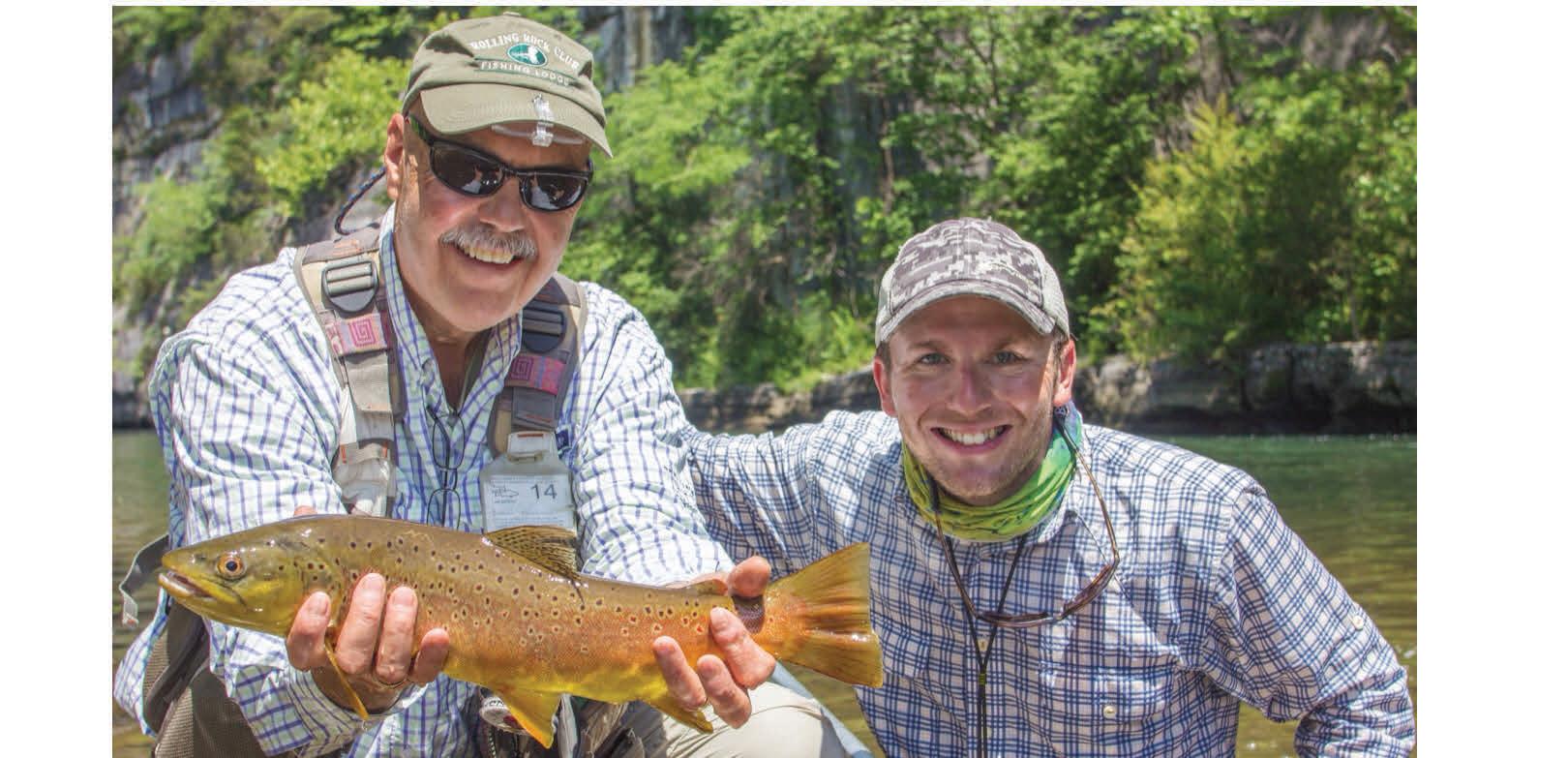










DRS4DNXTDRS6ANXT


You’re looking at it! Furuno’s award-winning Radar gives you clarity & target separation like no one else. Don’t take our word for it. See for yourself. Scan here, and we’ll show you!





























DRS4DNXTDRS6ANXT


You’re looking at it! Furuno’s award-winning Radar gives you clarity & target separation like no one else. Don’t take our word for it. See for yourself. Scan here, and we’ll show you!




























Embarking on the open water is an exhilarating experience, flled with the promise of adventure and relaxation. Whether you’re a seasoned sailor or a weekend cruiser, protecting your vessel with proper insurance is not just a choice—it’s a necessity. Explore the reasons why every boat owner should prioritize boat insurance for a worry-free voyage.
The open water can be unpredictable, with unexpected storms, collisions, or other potential accidents. Boat insurance can give you fnancial protection if there is damage to your vessel, providing coverage for repairs or replacement.
Accidents on the water can result in damage to other boats, docks, or even injuries to passengers. Boat insurance offers liability coverage, which can pay for damages or injuries you’re liable for while boating, up to specifed limits, and lawsuit costs if you’re sued. This includes damage you cause to another watercraft or if someone on or near your boat is injured and you’re found to be legally responsible.
Unfortunately, boat theft and vandalism are realities that boat owners face. Boat insurance has comprehensive and collision coverage that can protect you against events outside of your control, including theft and vandalism.
Accidents on the water may lead to injuries for you or your passengers. Boat insurance offers a range of optional medical payments coverage limits, helping to cover medical expenses if you are in an accident or someone is hurt on your boat, regardless of fault.
If you fnanced the purchase of your boat, most lenders require insurance coverage to protect their investment. Having boat insurance not only fulflls these requirements but also gives you peace of mind knowing that your fnancial interests are safeguarded.


Some water municipalities and marinas may require proof of insurance for docking or accessing certain areas. Boat insurance allows you the fexibility to explore different destinations without worrying about entry restrictions.
Emergency towing and assistance
Progressive boat insurance can include optional Sign & Glide® On-Water Towing coverage. If your boat is disabled or breaks down on the water, Sign & Glide® pays for on-water towing, jump starts, soft un-groundings, and fuel delivery.
Wreckage removal
If your boat sinks, Progressive boat insurance will cover the cost of removing your boat from the water (if removal is legally required).
Investing in boat insurance is not just about protecting a valuable asset; it’s about safeguarding the memories, experiences, and joy that come with your on-water adventures. Don’t let unforeseen circumstances disrupt your journey—navigate with confdence, knowing that Progressive boat insurance has you covered. Ensure a smooth and worry-free voyage, because when it comes to your boat, peace of mind is the ultimate luxury.
Scan to get a quote in as little as 4 minutes
learn more.

























If you love the outdoors and dream of being in business for yourself, now is the perfect time to make a change and choose a Coastal Angler or e Angler Magazine Franchise.
Ask one of our specialists about franchise territory availability in your area.









By Ben Martin, Editor in Chief
On December 11th at 3:00 p.m. the marine industry lost one of its kindest and most heartfelt supporters. A lifelong supporter of environmental awareness, the love of nature and teaching kids how to !sh, Rodney Smith was the earliest proponent of Florida’s groundbreaking net ban. He was the founder and publisher of the original Coastal Angler Magazine, creator and tireless volunteer of its Hook Kids On Fishing Program. Capt. Rodney Smith spent the better part of his life trying to improve the marine environment and sharing the wonders of the art and sport of !shing.
Rodney’s love and kindness was boundless.

Lifeguard, !shing captain, surfer, author, entrepreneur, and friend to all, Rodney Smith’s time on this earth was well spent helping others and showing love to Mother Nature and the marine environment.
Anyone whoever walked with Rodney would have invariably returned with a bag or pocketful of trash that he picked up along the way and then a erwards meticulously separated for recycling. Anyone whoever disparaged anyone else in Rodney’s presence would have immediately heard something positive about that person from Rodney. at’s just who he was.
Loving father, caring husband and faith driven entrepreneur, Rodney’s life was truly exemplary and saintlike. He will be missed, but he will also surely receive the same pat on the back and heartfelt “Good Job” that he gave to so many others while here.



Powered by twins, it runs over 30 knots and cruises efficiently at 20-30 knots. It’s a versatile, no-frills boat focused on rock-solid performance. Ideal for those needing a reliable, easy-to-maintain platform.
Powered by twins, the 20CC runs over 30 knots and cruises efficiently at 20-30 knots.
It’s a versatile, no-frills boat focused on rock-solid performance. Ideal for those needing a reliable, easy-to-maintain platform.




Whether you’re fishing in a kayak, canoe, or small boat, the ePropulsion eLite 500W redefines your on-water experience with innovative features and commitment to sustainability. Designed to be the most
and lightweight electric outboard in its class, it is an easy-to-use alternative to small internal combustion engines for enthusiasts worldwide. Max 5.6 miles at half throttle and 3.5 miles at full throttle. Experience the eLite Difference. Go Electric. Go Silent. Go Fishing!





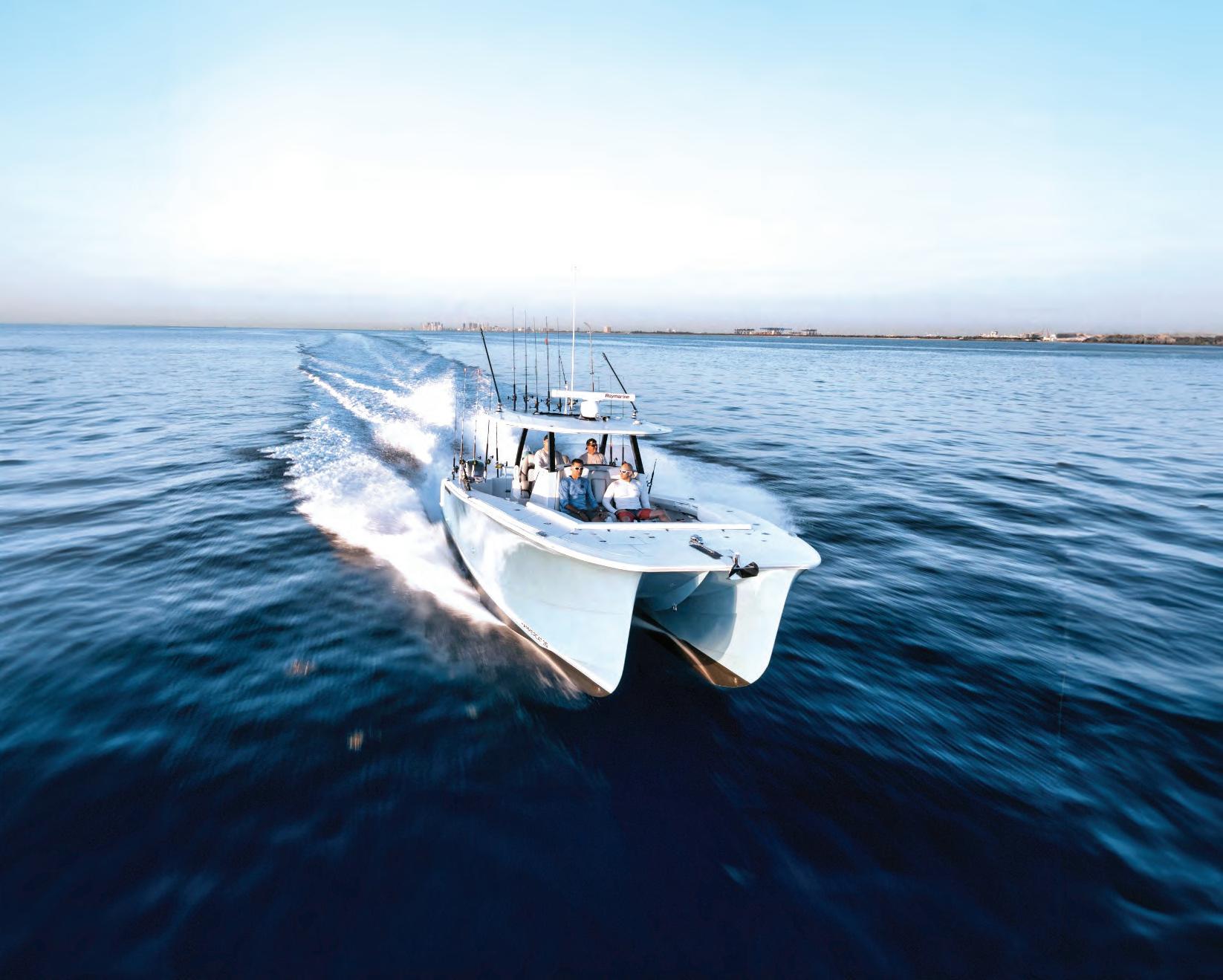






The Discover Boating Miami International Boat Show (DBMIBS) is set to return from February 12–16, 2025, bringing an extraordinary showcase of the marine industry. is annual event continues to draw boating enthusiasts, industry leaders, and newcomers alike, o ering a combination of innovation, and community.
Highlights of the 2025 Edition
Spread across six iconic Miami locations—Miami Beach Convention Center, Pride Park, Herald Plaza, Venetian Marina, Museum Park Marina, and Superyacht Miami at Yacht Haven Grande—DBMIBS provides a multifaceted experience.

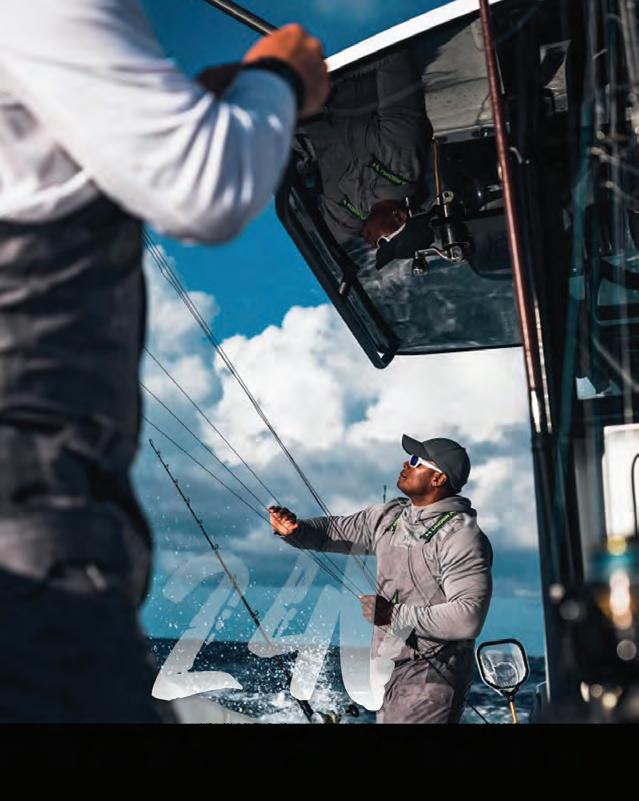
e Miami Beach Convention Center and Pride Park will host the latest in marine technology, boating gear, and vessels up to 49’’. On the water, Herald Plaza and Venetian Marina will feature a lineup of vessels, from sleek center consoles to high-performance powerboats.
A Boating Community Experience
e Progressive Boat Show Experience promises an engaging lineup of seminars, boating classes, and the popular AquaZone, an interactive space where attendees can test products and gain hands-on skills. For those looking to elevate their visit, Windward VIP tickets grant access to exclusive lounges, curated dining options, and concierge service.
Digital ticketing ensures a seamless entry process, with water taxis making it easy to explore the show’s sprawling venues. Water taxi tickets are sold separately.
From anglers to luxury yacht a!cionados, the show caters to all corners of the marine world. With its rich blend of exhibits, educational opportunities, and waterfront allure, it remains a must-visit event on the global boating calendar.
For more details and ticket options, visit www.miamiboatshow.com.







By Joe Woody
When winter descends upon the Smoky Mountains, the streams and rivers transform into a serene and picturesque setting. For avid anglers, this season o ers a unique and rewarding opportunity to !sh for trout. Cold water !shing in the Smokies during winter demands preparation, knowledge, and patience, but the solitude and satisfaction of hooking a trout in these crisp conditions make it all worthwhile.
Trout are cold-water !sh, and they remain active during the winter, albeit at a slower pace. eir metabolism decreases as water temperatures drop, making them less aggressive and more selective in their feeding habits. During this season, trout tend to conserve energy by holding in deeper pools or near submerged structures where currents are slow and food is more accessible.
e Smoky Mountains, known for their pristine streams and diverse aquatic habitats, provide excellent winter !shing opportunities. e recent storm damage has not changed that, although access and former topographical structuring may be somewhat altered the !sh have adapted and so will anglers. Rainbow, brown, and brook trout can all be found in the cold, clear waters of this region, with brook trout being particularly prevalent in the higher elevations.
Winter !shing requires careful planning to ensure success and safety. e Smoky Mountains can get bitterly cold in winter. Dressing in layers, including moisturewicking base layers, insulating mid-layers, and waterproof outerwear, is crucial. Gloves and a hat are always a must: Nymphs, midges, and small streamers are excellent choices for winter trout !shing. Patterns like the Zebra Midge, Pheasant Tail, and Woolly Bugger o en prove e ective. Since aquatic insect activity is minimal in winter, imitating small and slowmoving prey is key.
clear, low water conditions. Using light tippets (5x or 6x) and uorocarbon leaders can improve your presentation and increase your chances of a hookup.
Focus on deeper pools and areas with slow-moving water. Dead dri ing nymphs under an indicator or slowly

Winter trout can be extra wary due to the
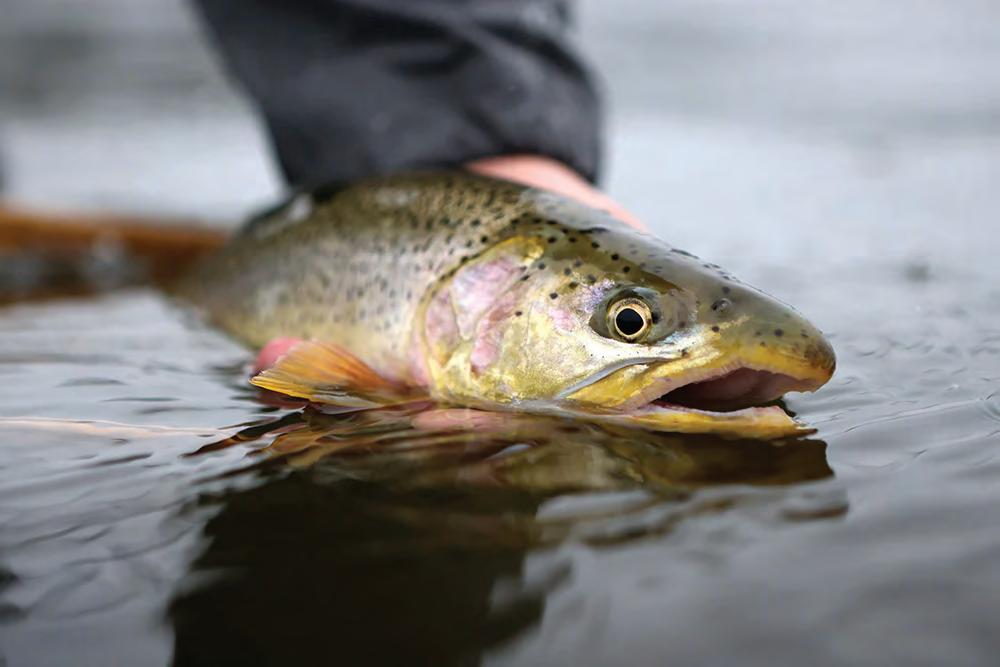
Townsend, this stream is a favorite among anglers for its healthy populations of rainbow and brown trout.
• Deep Creek: Known for its easy access just outside Bryson City, this area o ers a true remote !shing experience with just a short walk up its trail.
• Abrams Creek: Featuring clear waters and ample trout habitat, Abrams Creek is a reliable option for winter anglers
Winter trout are o en more active during the warmer parts of the day. Plan your trip to coincide with midday or early a ernoon. Low, clear water makes trout more alert to movement and noise. Approach the stream cautiously and keep a low pro!le. As any angler in these parts will tell you, always be mindful of slippery rocks and cold water. Wearing wading boots with good traction and a wading belt is essential.

retrieving a streamer can entice a bite. Pay attention to subtle strikes, as trout in winter o en feed so ly.
e Smoky Mountains are home to numerous streams, many of which are accessible year-round. Some top spots for winter !shing include:
• Little River: With easy access near
Fishing for trout in the Smoky Mountains during winter is a serene and ful!lling experience. e combination of tranquil surroundings, reduced crowds, and the challenge of cold-water angling creates an unforgettable adventure. With the right preparation and approach, you can enjoy the magic of winter !shing and make memories that will last a lifetime.








Afishing destination in its own right, Damascus, Virginia sits at the confluence of Whitetop Laurel, Tennessee Laurel, and Beaverdam Creeks, which form Laurel Creek for a short distance and then join the South Fork of the Holston River just outside of town limits. Fishing options around Damascus cover a wide range, from roadside to remote.
Wheelchair accessible fishing can be found at several locations. In downtown Damascus, check out Laurel Creek Park, the home of the Damascus Farmers Market. Find several wheelchair accessible fishing platforms on the Creek Junction Accessible Fishing Trail along Whitetop Laurel and adjacent to the Virginia Creeper Trail at its Creek Junction trailhead. Beartree Lake is wheelchair accessible with fishing platforms and a paved trail along half of the 14-acre lake.
Depending on where you go, fishing near Damascus may require a freshwater fishing license, national forest permit, and trout license for Virginia and/or Tennessee. Fishing licenses may be purchased online or in person.
This 14-acre cold-water lake is a designated stocked trout water located in the Mount Rogers National Recreation Area. It offers a sandy swimming beach, wheelchair accessible fishing docks, and plenty of trailside fishing. The US Forest Service and Virginia DWR sometimes offer Kids’ Fishing Days at Beartree Lake.
Note: Beartree Lake is drained to 1/3 of its standard capacity for a restoration project, Aug to Nov 2024.


This underrated trout stream flows through Cherokee National Forest into Damascus from nearby Shady Valley, TN. Access is most popular from Backbone Rock Recreation Area, roadside pull-offs, or the short, one mile Beaverdam Creek Trail in Damascus.
Whitetop Laurel and Tennessee Laurel converge just upstream of downtown Damascus to form Laurel Creek, which flows only a few miles before joining the South Fork of the Holston River. Fish Laurel Creek right from downtown at Laurel Creek Park, the Damascus Dog Park, or Creekside Park on the Virginia Creeper Trail.
The South Fork Holston River originates near Sugar Grove, formed by the combination of several cold-water streams. It has DWR special regulation areas as well as stocked trout sections. Roadside access near Damascus is best at Alvarado near where the South Fork joins the Middle Fork and forms the headwaters of South Holston Lake. The Virginia Creeper Trail between Damascus and Alvarado offers ample trailside access to the South Fork. Find the famed tailwaters of the South Fork Holston a bit further downstream just past the South Holston Dam in Tennessee.
Voted #4 in USA Today’s 10 Best Rivers for Fly Fishing in Summer 2024
This roadside stream parallels Route 91 through Cherokee National Forest from Laurel Bloomery, TN to Damascus. Tennessee Laurel is a freestone creek with a mix of riffles and pocket water. A bit more wider and more open than its sister stream, Whitetop Laurel, Tennessee Laurel makes for easier fly casting. This stream has a mix of wild and stocked trout and is best accessed by Laurel Creek Trail or at roadside pull-offs.
Just upstream of Damascus lies one of Virginia’s greatest trout streams, Whitetop Laurel Creek. Approximately seven miles of Whitetop Laurel are stocked trout waters located on both private and public lands, with an additional five miles of special regulation waters. Within the special regulation sections, anglers can find brook, brown, and rainbow trout.
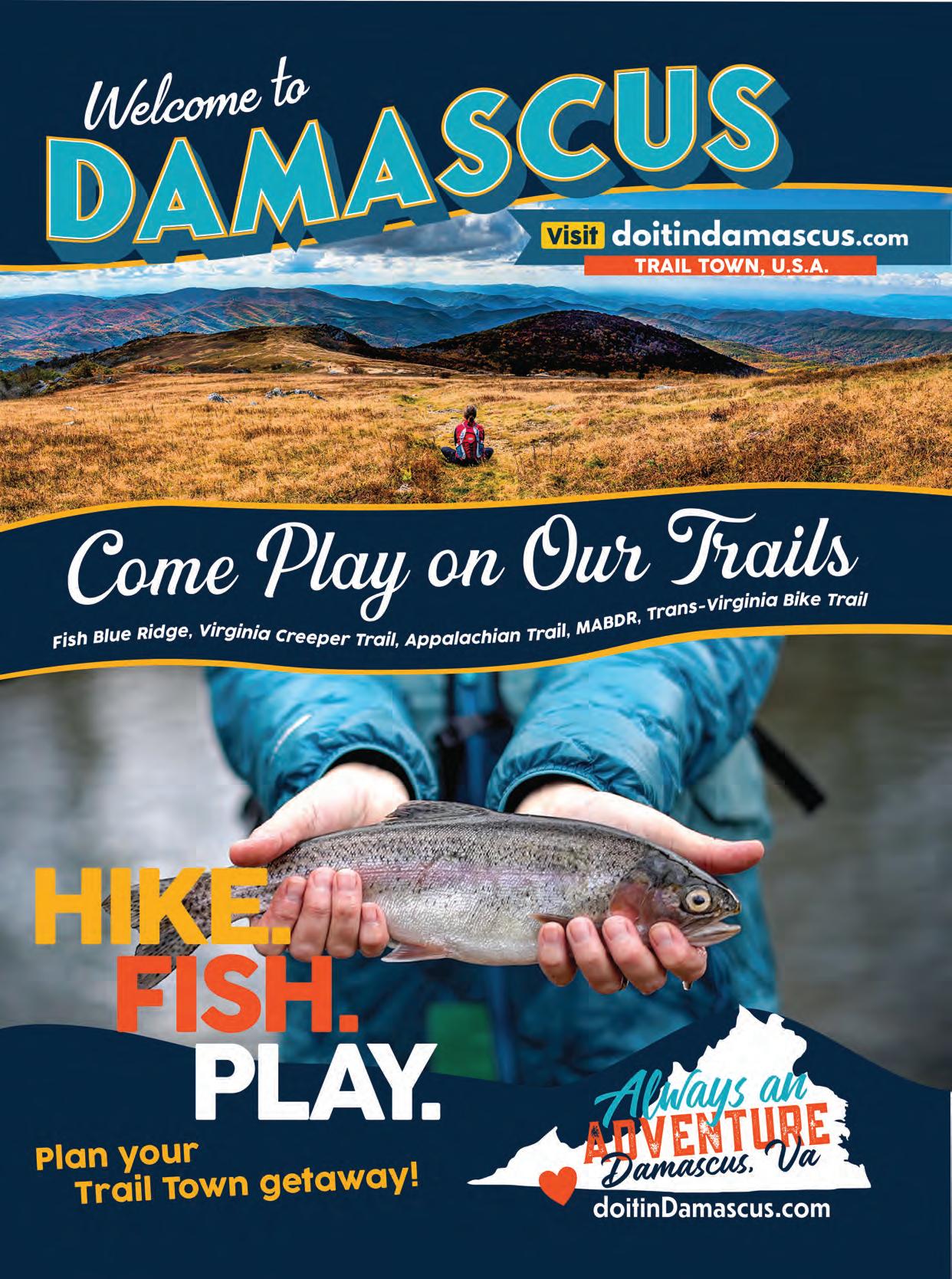
Fishing in East Tennessee’s 9 Lakes Region is a thrill for all seasons, but winter fishing deserves a top spot on every angler’s bucket list. When temperatures drop, the fish get hungry, offering prime opportunities to reel in a variety of species. From trout to trophy-sized muskie, the colder months bring some of the best fishing action you’ll find.
Bass Bonanza
The bass fishing in Cherokee, Douglas, and Watts Bar Lakes is second to none. These waters are legendary for their bounty of smallmouth and largemouth bass, making them a hotspot for championship tournaments, including the National Professional Fishing League tour at Douglas Lake on May 22-23, 2025.
But don’t think these lakes are just for pros. Recreational anglers can also enjoy the thrill of striper fishing, with plenty of photo-worthy catches. Need some help? Local guides are available to supply gear and insider tips to land that bucket-list bass. And when winter cools down the Holston and French Broad Rivers, switch from fly fishing to boating—follow the shad into the creeks, and you’re in for a treat.
Muskie Madness
Winter is muskie season in the South, and Melton Hill Lake is the ultimate destination. As water temperatures drop, these elusive predators settle into deep pools and rise to feed in nearby shallows. Landing one is no small feat—Melton Hill boasts the state record, a whopping 55-inch muskie!

For trophy walleye, Norris Lake is the place to be, especially in February and March when these fish make their spawning run up the Clinch and Powell River headwaters. Sauger enthusiasts should head to the upper reaches of Fort Loudoun, Cherokee, and Douglas Lakes, where the Tennessee Wildlife Resources Agency keeps these waters stocked and thriving.
Crappie Crush
March is prime time for crappie fishing in Fort Loudoun, Douglas, Tellico, and Melton Hill Lakes. Right before the spawn, crappie bites heat up, and the channels are packed with opportunities to fill your cooler.
The 9 Lakes Region also boasts some of the best trout fishing in the Southeast. Native trout streams in the Cherokee National Forest and the Smoky Mountains offer breathtaking scenery and excellent catches. Cosby Creek is a hidden gem for bank fishing, while Bald River Falls and Citico Creek are easily accessible hotspots.
For kayak anglers and bank fishers, the cold tailwaters below Norris and Cherokee Dams provide excellent opportunities for brown, brook, and rainbow trout. Avid fly fishers keep a close eye on the TVA app to time their trips with water release schedules—perfect for wading into action.
East Tennessee’s 9 Lakes Region offers something for every angler, whether you’re chasing bass, muskie, or trout. Bundle up this winter, grab your gear, and experience the thrill of fishing in one of the most diverse and productive regions in the country.


By David A. Ramsey
It was around 35 years ago when I first learned of Lee Wulff’s famous quote, in which he declared, “Game fish are too valuable to be caught only once.” As an avid trout and bass fisherman, I readily embraced the common perception that Wulff’s declaration, made back in the 1930s, marked the birth of catch and release, a practice we now take for granted and know actually started long before he said what he said. But it’s not the origin or history of that practice that I’ve been pondering lately—it’s the conception, which Lee Wulff strongly advocated for, that living fish (especially wild fish) have extraordinary value.
By “valuable,” I believe Wulff was referring to a few of things, not the least of which was the value in gifting a beautiful live fish to another angler by carefully and quickly releasing it to be caught again. He also understood the potential economic impact of that act, whereby maintaining larger populations of fish in popular fisheries meant more opportunities for more fishers. More fishers meant more stimulus to local economies, to tackle and gear companies, to the travel industry, etc.
Certainly, the value of wild fish became more apparent to me personally as I spent more and more time learning about and pursuing them in their wild, beautiful habitats—hence, one of the other main contributors to said value: where fish live. Golf courses are pretty. Beaches and parks are nice. But a high, wild, mountain trout stream is most often next-level, drop-dead stunning, by just about anybody’s standards.
When I first got into wild trout fishing, long before I half-way figured out what I was doing angling-wise, I found myself constantly
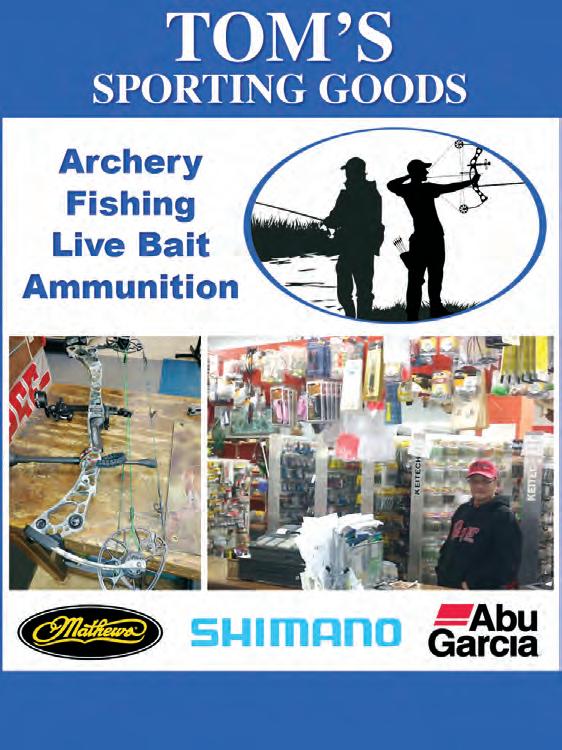

daydreaming about various remote headwater streams in the Blue Ridge backcountry. The primeval lure of those places was powerful—greater even than the pull of fishing in them. To this day, I’m often highly distracted from my fishing by the very place where I came to fish. I learned early on that great Southern Mountain fishing memories don’t even have to have great fish in them.
Another contributor to the high value of wild fish is the therapeutic factor, which is, of course, related to the aforementioned scenic habitat factor. All that really needs to be said here is that you can spend an hour and a couple hundred bucks, every week, with a stranger in a dim room, or you can walk straight into paradise on Earth and spend a glorious mountain morning with other living beings who won’t even ask your name. They will just sing and watch as you meditate your way through that realm of cool, diamond-clear creation.
Finally, and in my view most importantly, there is what we call “the natural connection factor” in assessing the value of wild fish. Spending time in the places where wild fish exist inspires us to want to protect those places. Sometimes we become strongly connected to them emotionally, even spiritually, to the extent we become advocates for preserving other such places. Ultimately then, the value of wild fish grows to enhance the value of wild Earth.
It is more important than ever that we remind ourselves and each other that we are all connected to the same natural world, and therefore, to each other. How we play our parts in that world matters greatly to all the other parts. The value we place on the fish we pursue, for all the reasons stated, matters greatly. My true hope for this new year is that many more of us will come to know and embrace the fact that, in so many ways, it isn’t just about the fishing—it’s about the living.
David Arthur Ramsey is an outdoor photographer, writer and conservationist, born and raised in the mountains of northeastern Tennessee. His outdoor writing and photography have been published locally, regionally and nationally and are most often associated with work to preserve and protect threatened lands and waters throughout the Southern Appalachian Mountains. Field and Stream Magazine and Toyota Motor Company named David the National Hero of Conservation in 2011 for his leadership in saving the 10,000-acre Rocky Fork watershed in northeastern Tennessee. His newly published book, Rocky Fork: Hidden Jewel of the Blue Ridge Wild, tells the story, through his rich photography and his first-hand account, of the more than decade-long battle to preserve this Appalachian and American treasure.

Owner StriperFun Guide Service, Tennessee and Kentucky
Walleye, Bass, Crappie and Muskie Charters, Superbaittanks. com, Captain Jim Marine Electronics and much more……
DATE OF REPORT: January 2025. Greetings to my readers! I hope that the world finds you and your family doing well!
COME VISIT THE BEAUTIFUL CUMBERLAND RIVER FOR FABULOUS WINTERTIME FISHING TRIPS –CALL EARLY WHILE WE STILL HAVE DATES AVAILABLE! MONSTER TROUT FISHING BELOW \THE LAKE CUMBERLAND DAM!

Captain Jim Fishing offers trout charters December through April below the Lake Cumberland’s Wolf Creek dam in Kentucky! This type of fishing is “drift fishing” jigging live bait for huge rainbow and brown trout up to 13 pounds! You will love this exciting type of fishing!
CUMBERLAND RIVER STRIPER, WALLEYE AND SAUGER –HOLSTON, POWELL AND CLINCH WALLEYE
StriperFun and Tennessee Walleye Charters stay busy fishing for striper, walleye and sauger on the Cumberland River, near Gainesboro, Tennessee, all winter long – January running through the end of March! The beautiful flowing waters of the Cumberland River is loaded full of big fish. The Cumberland River is a world class striper, sauger and walleye destination (fishing for 2 people only on the Cumberland River)!
We also offer walleye charters on the Holston, Powell or Clinch Rivers in Eastern TN. The fishing on the Clinch River is year around, and the Holston and Powell River fishing begins in December, running through the end of April! Be sure to book your striper, walleye and sauger trips on the Cumberland River and walleye trips on the Powell, Holston or Clinch Rivers in Eastern TN! You are really going to love this exciting way of fishing on these beautiful rivers!
It is great to be alive and be a “free” American! I look forward to seeing all of you this year on the water. Always remember to stop and shake the hand of a person in uniform or wearing garb that shows they are a veteran! Their service is why you can vote and can enjoy the freedoms you do! Until next time, blue skies and tight lines!
With full State licensing and insurance, all Captain Jim’s Guide Service guides (19 guides on 18 waterways fishing 9 different species of fish) can take you on a safe, fun and unforgettable fishing adventure! Check out all of our fishing services as well as our exclusive “online” store at www.striperfun.com or call 931-403-2501 to make reservations today.



By Perry Hensley
It is that time of year on the water when it is bitterly cold and the temperature barely gets out of the 40s. But despite a chilly boat ride to your favorite location on the lake the crappie bite can heat things up in a hurry. As the winter water temperatures get steady the crappie have moved, following the baitfish into shallower waters of the coves, points and flats on the lake. It’s a perfect time to take advantage of those schooling, suspended crappie.
I have said it before and I will repeat myself by saying the most common method used by the anglers on the lakes of Cherokee and Douglas, here in East Tennessee, is the hair jig (tipped with a minnow) and float method. One thing I need to mention also that if you are fishing these areas and the bite seems to shut down try downsizing your bait to a smaller profile bait and like my father told me time and time again “slow down on your presentation”.
While it’s no secret to anyone that the word gets around pretty quickly when and where crappie are being caught in certain areas here on Cherokee and Douglas lakes, if crowds annoy you, as they do me, there is a solution I have for that. Being an angler that prefers to feel that thump, I mainly continue using the tightline casting and vertical jigging methods on brush, laydowns, steep banks or rock piles—seems these dead winter slabs can be anywhere. For myself, if I am looking to have the best chance at a limit of fish, I will fish these areas in addition to the crowds. The advantage I have found by doing this is that I am more apt to catch a mixed bag of black and white crappie instead of just the white slabs, therefore increasing my chances of catching a limit of fish. This eliminates wasting too much time in a dead area.
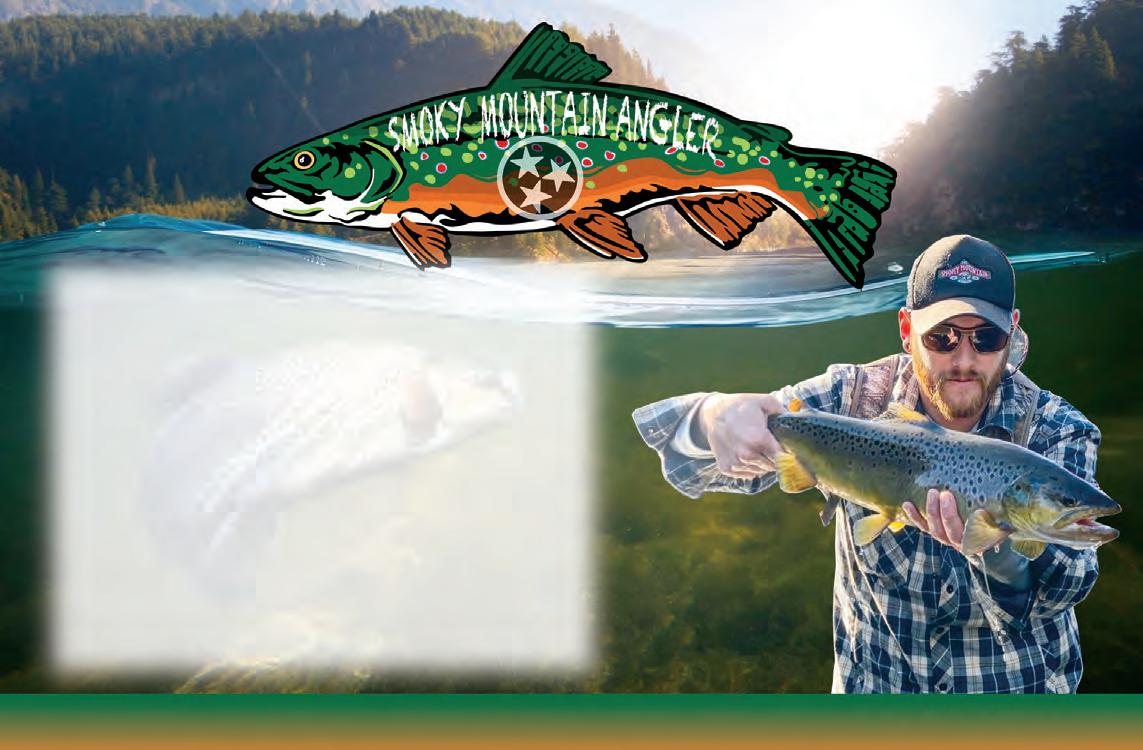

By Holly Kays Bowman
As Hurricane Helene fomented in the Caribbean, it seemed likely that Great Smoky Mountains National Park would take a direct hit. The storm reached Category 4 before slamming Florida’s Gulf Coast, then headed north toward the Smokies.
But as it traveled, its course shifted east. Helene and its predecessor storm dropped unfathomable amounts of rain across Southern Appalachia—many places received well over a dozen inches in a matter of days, with some locations recording two dozen or more. The storm’s severity was unprecedented in the region, causing flash floods and landslides that have so far claimed at least 95 lives in North Carolina alone. Asheville, where extreme flooding destroyed entire neighborhoods and decimated the water system, logged a little over 14 inches between September 24 and September 28.
Most of the park fell far enough west of Helene’s path to escape with only minor flooding, but its extreme eastern region—Cataloochee, Balsam Mountain, Big Creek—was inundated. Record-setting rains tore out trails and roads and damaged historic buildings, leading the park to close these areas until further notice.
The worst damage unfolded in Cataloochee, a secluded valley in
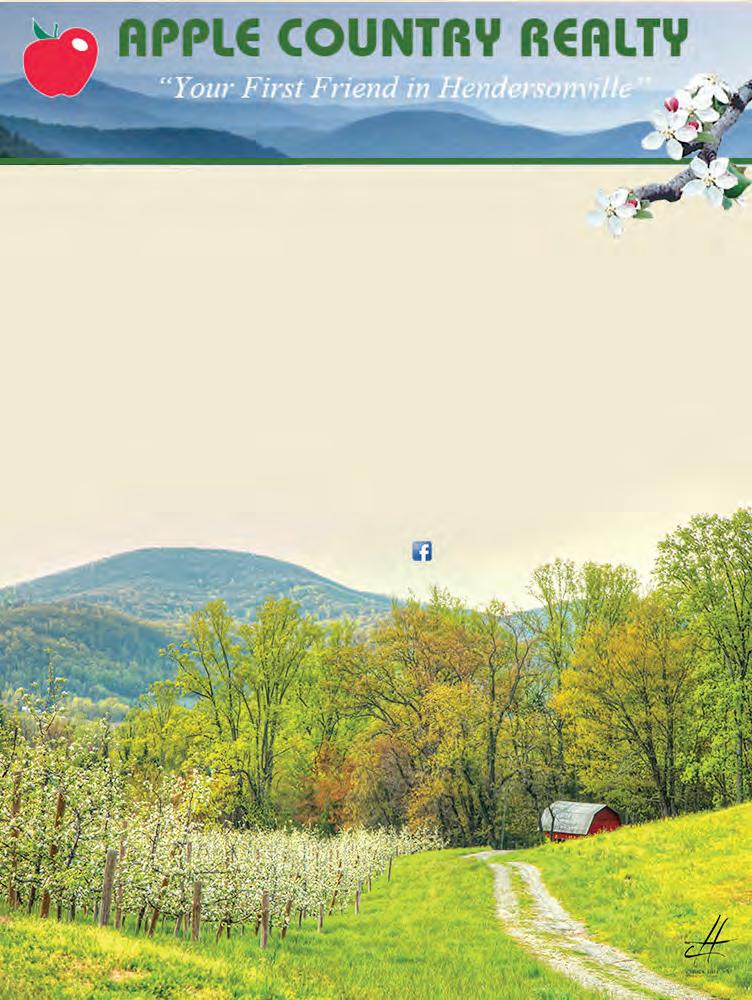
Haywood County, North Carolina, that is home to historic buildings showcasing the region’s pre-park history and one of the park’s two main elk herds. A US Geological Survey gauge on Cataloochee Creek located 3.6 miles north of Cataloochee Campground shows that the creek, which usually flows about two feet deep alongside the road, spiked to 9.5 feet September 27. That’s more than 17 inches higher than the previous record of 8.08 feet, set in 1963, said Matt Kulp, the park’s supervisory fishery biologist.
The flood’s aftermath is written most clearly on the valley floor, where the fields are full of debris. The far side of the creek, where the roots of the trees growing alongside it hold the soil in place, remained intact, but the road that borders the other bank is mostly ripped out and impassable to vehicles. In many cases, said Kulp, who visited Cataloochee October 9 to assess its condition after the storm, it’s deeper than the original creek bed.
“The far side had a root system in place, and the water just floated over it, whereas the road is like a weak spot,” he explained. “It’s right next to the creek, and so once water got onto it, it just ate down through it.”
National Park Service photos show the roadway going past Caldwell House is now a gorge, and the rushing waters did severe damage to Caldwell Barn, which sits on the road’s opposite side. Park crews are working to stabilize the building.
“The water pushed in one of the walls on the upstream side, and it corroded out the footers—the foundations under it—so the corners aren’t sitting on anything,” Kulp said.
Before the storm hit, the Friends of the Smokies-funded Forever Places crew was working on a restoration project at the Steve Woody House, located in Cataloochee two miles down Rough Fork Trail. The house wasn’t damaged, but the trail was. The project is only about halfway complete, and the crew won’t be able to finish it until the trail is fixed.
According to Tobias Miller, the park’s roads, auto shop, trees, and trails branch manager, “all trails in the Cataloochee Valley have been impacted with various levels of erosion and flooding damage.” The two foot log bridges on Pretty Hollow Trail were the only ones that survived.
Just over the ridge from Cataloochee, Big Creek Trail took damage throughout its length, parts of it blown out so badly the park may need to bring in contractors to fix it. The fate of a 70-foot steel bridge that had crossed the creek five miles up the trail demonstrates the force of the flood. Both the bridge and its abutments washed away, and the steel beam was found downstream—bent.
Heintooga Road saw numerous washouts and slides along its length, as did Straight Fork Road, which starts just past the Cherokee fish hatchery on Big Cove Road. The foot log bridge on Swallow Fork Trail, one mile up from the junction with Big Creek Trail, washed away, and a significant landslide took out about 100 feet of trail tread on Gunter Fork Trail. However, many miles of trail have “really low impacts” with few downed trees, Miller pointed out. His team is continuing to assess trails in the eastern section of the park and to pinpoint the western extent of the damage. It’s unclear how long it might take to repair roads, trails, and bridges and allow the public back into these beloved areas, but addressing the damage is expected to take several months.
Even if Big Creek reopened today, the multitude of nearby road closures would make access difficult. Most visitors reach Big Creek by taking Interstate 40 to Waterville Road. Just below the power plant
at Waterville, the Pigeon River jumped from its normal level of 4 feet up to nearly 22 feet before raging water displaced the gauge at 10 a.m. September 27. This part of I-40 has been closed since a swollen Pigeon River devoured entire sections of highway through the Pigeon River Gorge. No timeline is yet available for reopening, but the North Carolina Department of Transportation expects to award a contract for the road’s permanent repair by the end of October.
The implications of this closure stretch far beyond Big Creek. I-40 is a key corridor for travel between Western North Carolina and East Tennessee, and it’s the only road connecting Haywood County, North Carolina, and Sevier County, Tennessee, that is open to commercial travel. In the first five days after Newfound Gap Road reopened on October 2, 173 commercial vehicles were turned away after attempting to use that route. The road is too steep and curvy for large trucks, with no shoulders for large trucks to slow down or pull over, said Management Assistant Katie Liming. Drivers who violate the ban on commercial traffic can be fined up to $5,000 and charged with a federal misdemeanor.
“The key message is, it’s illegal and unsafe,” Liming said. “We understand that there are limited routes available, but the prohibition on commercial vehicles on that road in particular is really for the safety of all drivers.”
Despite extreme flooding that in some places resculpted creek beds within the park, Helene is unlikely to inflict long-term effects on the Smokies’ diverse assemblage of aquatic species.
“Even in a major storm event, fish are pretty resilient,” Kulp said. “They’ve evolved with those things. People think they all get washed out, but they don’t. They actually survive them just fine.”
As a flood develops, fish and other aquatic organisms look for nooks and crevices along the bottom of the stream where they can hide, protected from the increasingly swift current. They ride out the storm in this relatively calm water and re-emerge when the storm passes. Extreme floods might rip away some of these safe havens, but not all of them. Kulp, who has been working in the Smokies for 30 years, said that the only time he saw a major decline in fish populations following a flood was in March 1994, when Little River took out large sections of Little River Road and Tremont Road. The adult trout population declined by about 50 percent but bounced back to normal within a few years.
More commonly, a severe flood might wipe out the youngest age class of fish if it occurs soon enough after spawning season to catch the fish while they’re still small and vulnerable. These small fish can get washed away, leaving a gap in the fishery’s age structure. Fish populations tend to recover quite easy from this kind of disruption—unless it happens repeatedly. Most brook trout get only one or two chances to reproduce in their lifetime.
“If we keep getting these extreme events at the wrong times of year, you can imagine it would only take a few years to eliminate age classes to where your population is going to be in trouble,” Kulp said. “And that’s a concern to me, because it seems like we’re starting to see more consistent winter and spring flood events of the magnitude that takes out young fish.”
Holly Kays Bowman is the lead writer for the 29,000-member Smokies Life, a nonprofit dedicated to supporting the scientific, historical, and interpretive activities of Great Smoky Mountains National Park by providing educational products and services such as this column. Learn more at SmokiesLife.org or reach the author at hollyk@smokieslife.org. For a full list of current park closures, visit nps.gov/grsm/planyourvisit/conditions.htm.

Perched at 5,506 feet above sea level, Beech Mountain, NC, is the ultimate winter playground for families! As the highest town in Eastern America, it serves up stunning views of snow-capped peaks and a perfect setting for a memorable and affordable getaway filled with frosty fun.
At the Beech Mountain Resort, there’s something for everyone. With 17 ski slopes spread across 98 acres, a fun freestyle terrain park, and a state-of-the-art tubing park, you’ll find plenty of ways to enjoy the snow, no matter your skill level. Glide down gentle tubing lanes or take on skiing and snowboarding on slopes tailored to beginners, intermediates, and experts. When it’s time to warm up, the Resort Village welcomes you with delicious dining and entertainment the whole family will enjoy.
The fun doesn’t stop there! The Town of Beech Mountain’s free Sledding Hill is a mustvisit for kids 12 and under. Bring along a plastic sled or pick one up from nearby shops and let the giggles begin as the kids race down the hill.
For families who love the great outdoors, Beech Mountain’s over 27 miles of hiking trails offer winter magic at its best. Wander through frosty forests, shimmering icy streams, and soak in views of snowy peaks and valleys

blanketed in white. You may even run into a deer or two. These trails are perfect for a little adventure and some unforgettable family photos. When it’s time to relax, Beech Mountain offers reasonably priced accommodations to suit every group and style. Whether you’re drawn to a charming condo in the heart of town, a secluded chalet, a private home, or a quaint inn or lodge, you’ll find the perfect home base for your mountain escape.

During your stay be sure to explore the shopping and dining options. Beech Mountain provides a wide array of cuisine choices ranging from barbecue to pizza, grilled cuisine and fine dining to Mexican fare, many of Beech Mountain’s restaurants include outdoor and indoor seating options, live music on designated days, extensive menus and unbeatable ambiance shared amongst locals and visitors.
Don’t miss out on group discounts, season passes, and unbeatable winter fun. Plan your visit with ease—book lift tickets, lessons, and lodging online. Whether you visit for a long weekend or a week-long stay, for an unforgettable winter escape, Beech can’t be beat!
For more information visit beechmtn.com
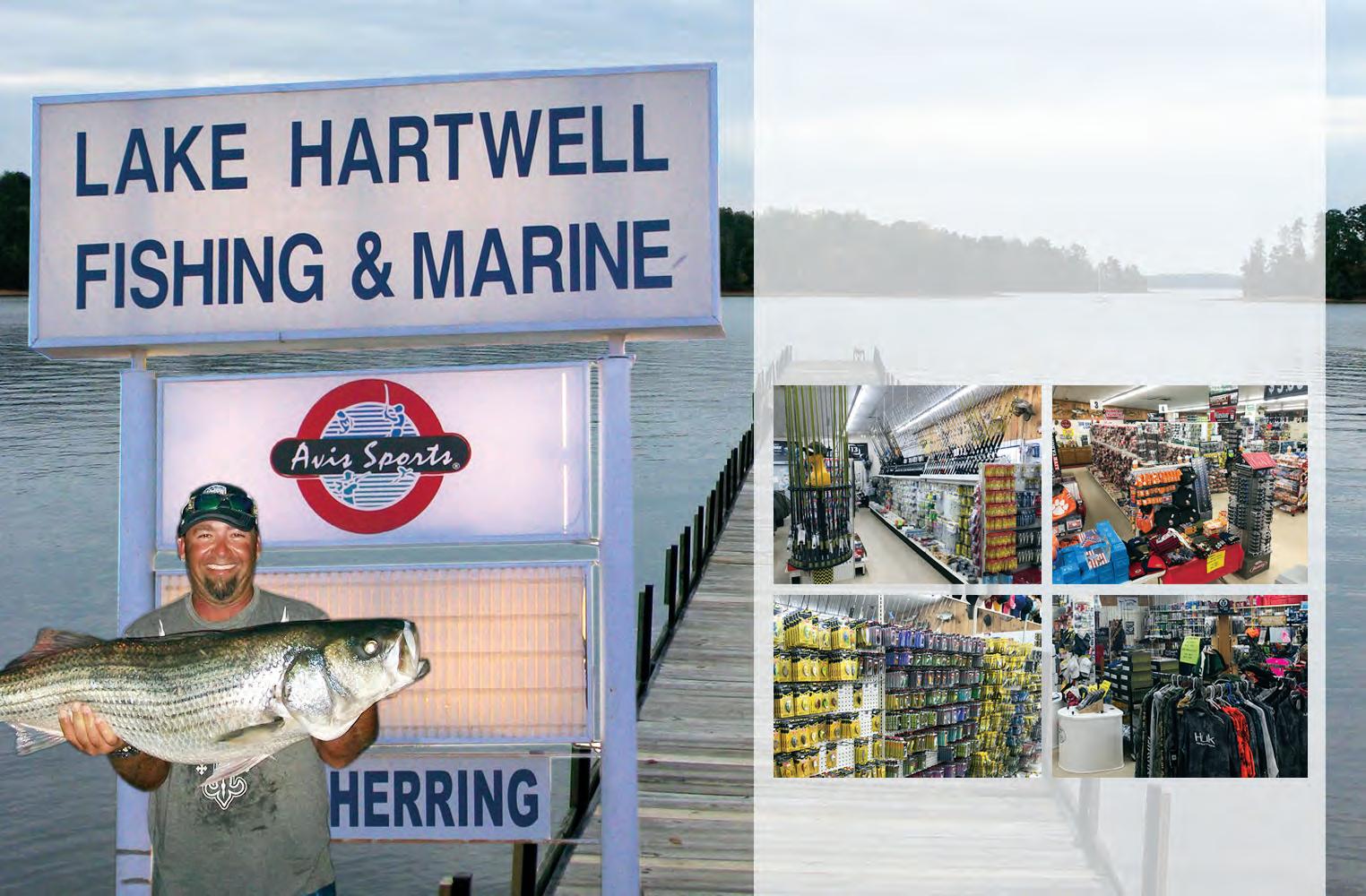






















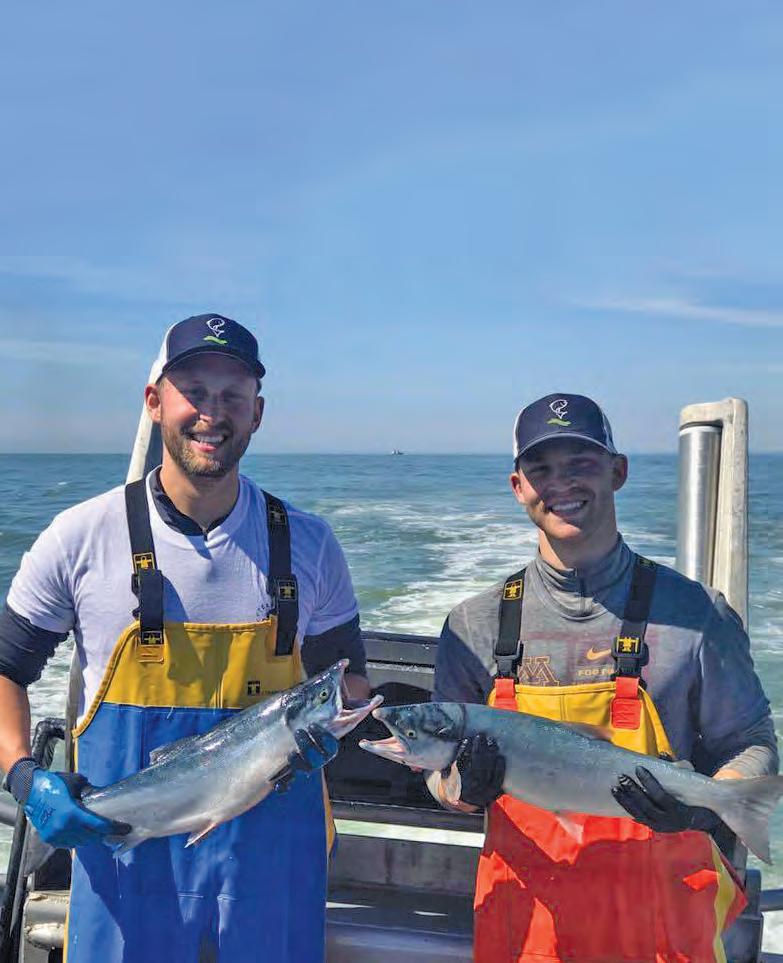




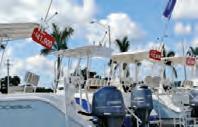


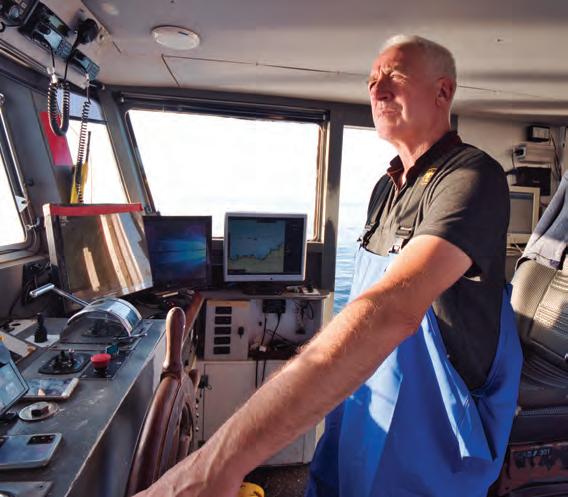

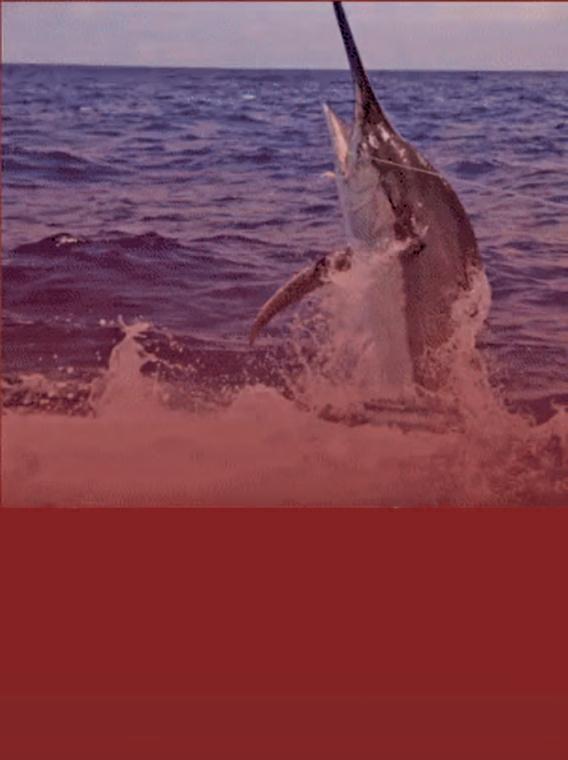



Tim Barefoot
As winter deepens, cooler waters push more !sh o the beaches and toward the warmer edges of the Gulf Stream. With grouper and snapper now o -limits due to regulations, it’s time to shi our focus to productive species still on the table—trigger!sh, vermilion snapper (beeliners), and seabass. For those looking to venture even deeper, deepdropping remains an exciting option.
e December full moon o en marks a turning point in !shing. Grouper and speckled trout seasons wind down, leaving anglers to adapt to what the regulatory environment allows. Fortunately, the stacks of triggers, beeliners, and pelagics in deeper waters o er excellent opportunities. Start your search around the 150-foot mark and use your !sh!nder to locate promising spots.
For precision !shing, modern tools like spot-lock trolling motors—such as the Rhodan or Minn Kota—are game changers. ese motors allow you to hover directly over schools of !sh with ease. However, they can be limited when deploying a kite, as the wind necessary for kite !shing can drain trolling motor batteries quickly. at’s

where anchoring, a classic yet e ective technique, comes into play.
Yes, anchoring may feel like a step back for those spoiled by spot-lock motors, but it’s a reliable method for staying on productive marks without straining batteries. Once anchored, consider adding a kite to your !shing arsenal. Kites are particularly e ective for enticing leader-shy species like yellow!n tuna and wahoo. When properly deployed, they minimize visible leader material in the water, o en resulting in immediate strikes.
provide hardy, versatile bait. Supplement your live bait with cast-netted !sh to use as live chum or cut into chunks.
A sabiki rig is another indispensable tool. Jigging up live bait at your !shing spot o en produces exactly what predatory species are feeding on. Don’t hesitate to use small snapper, grunts, or other bait!sh you catch with a sabiki as o erings on your light line or kite. Wahoo, for example, have been known to eat everything from full-sized grunts to snapper. Frozen or fresh Spanish mackerel also make excellent bait for wahoo and tuna.

Successful kite !shing requires teamwork. Assign one crew member to manage the kite and bait while others focus on !lling the cooler with trigger!sh and snapper. Proper setup is essential. Bring live bait from inshore or nearshore waters; cigar minnows, sardines, pin!sh, and menhaden are excellent choices. A pin!sh trap can also
Experience Fishing during this time of year is about more than just !lling your cooler; it’s about enjoying the process and making memories. Whether you’re targeting bottom-dwellers like trigger!sh or keeping a light line out for the chance at a wahoo or tuna, the key is to stay adaptable and prepared. As always, take the kids along and capture plenty of videos of your adventures. Fishing is more than just a hobby— it’s a way of life.
For more from Tim Barefoot, visit barefootcatsandtackle.com and check out his YouTube channel.








At just six years old, Nathan “Bibil” Barreto is already making waves in the angling world! On July 8, 2024, while !shing Brazil’s iconic Juruena River, Nathan landed an incredible 11.79-kg (26-lb) payara. is catch shattered the IGFA Men’s Smallfry World Record for the species.
Nathan hooked the record-setting payara using cut bait, showcasing his growing skills as an angler. A er verifying the weight on a certi!ed scale, he ensured the safe release of this magni!cent !sh. Nathan’s actions not only highlighted his talent but also demonstrated that conservation is a value no angler is too young to embrace.
e International Game Fish Association (IGFA) has established guidelines for Smallfry World Records to encourage young anglers. Here’s what you need to know:
• Species: Records are maintained for the heaviest !sh of any eligible species.
• Age: Categories exist for male and female anglers aged 10 years and under.
• Weight: Fish do not need to be weighed on land, as long as the weight is veri!ed appropriately.
• L ine Class: Records are recognized for all line and tippet classes covered under IGFA rules.
• Other Rules: All IGFA International Angling Rules apply, except for the standard weighing requirement.
Encouraging young anglers to aim for world record catches—or simply to submit outstanding catches for consideration—o ers a fantastic opportunity to foster a love of !shing. e IGFA’s Smallfry division plays a vital role in promoting the sport among young enthusiasts.
Taking a kid !shing doesn’t just teach them valuable skills—it can improve their lives and create unforgettable memories. Who knows? You might even help them reel in a world record!
For more information on the IGFA Smallfry records division, visit www.IGFA.com.

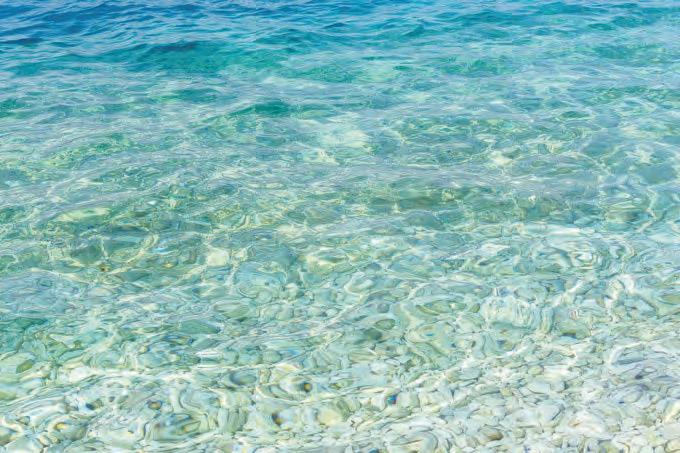

























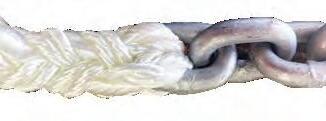


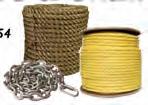





Choosing the right !shing line is crucial for success on the water. Two popular options— braided and mono!lament lines—o er distinct advantages, and your choice o en depends on your !shing style, target species, and conditions. Let’s compare their strengths and weaknesses to help you decide.
Braided line stands out for its high strength-todiameter ratio. Its thin pro!le allows for less drag and greater line capacity on reels, making it ideal for deep-water !shing. For instance, a 30-pound braid can match the diameter of an 8-pound mono!lament. Mono!lament, while thicker, provides added durability and is o en preferred in situations requiring extra shock absorption, such as battling !sh with sudden, strong runs.
Braid has minimal stretch, giving it superior sensitivity. is makes it perfect for techniques like jigging or bottom !shing, where detecting subtle bites is crucial. It also enhances hook-setting power. On the other hand, mono!lament’s stretch acts as a cushion during hard strikes, reducing the risk of breakage.
Mono!lament generally o ers better abrasion resistance, making it a top choice in areas with rocks or heavy cover. However, it is prone to UV damage over time, which can weaken the line.

Braid is more resistant to UV exposure but can fray easily when rubbed against rough surfaces.
Braided line’s thin diameter and lack of stretch give it an edge for long-distance casting, especially in open water. However, mono!lament’s low visibility underwater makes it advantageous for targeting skittish !sh in clear water. To counter braid’s visibility, many anglers use a uorocarbon leader.

e choice between braid and mono depends on your needs. Braid excels in strength, sensitivity, and casting, while mono shines in shock absorption, abrasion resistance, and stealth. Many anglers carry both to adapt to various scenarios or use a braid mainline with a mono or uorocarbon leader for versatility.
Ultimately, knowing when to use each type can make all the di erence in your !shing success.










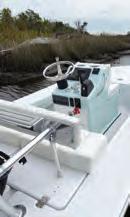









Praise for DiamondAura®
“So much sparkle and the play of light on DiamondAura® beats any diamond!” — D.D. from Columbus, OH
It was the jewelry piece that made the world stop and take notice. In the middle of a long volley during the big American tennis tournament, the chic blonde athlete had to stop play because her delicate diamond bracelet had broken and she had to fnd it. Te tennis star recovered her beloved bracelet, but the world would never be the same.
From that moment on, the tennis bracelet has been on the lips and on the wrists of women in the know. Once called eternity bracelets, these bands of diamonds were known from then on as tennis bracelets, and remain the hot ticket item with jewelers.



A classic tennis bracelet serves up over 10 carats of sparkle for a guaranteed win
with D Flawless diamonds from another company that costs $57,000!
Want to look like a million bucks without stressing over losing or damaging something that cost you a fortune? Te Love Wins Tennis Bracelet is a simple strand of glittering gems in precious sterling that epitomizes elegance.

FREE earrings with your purchase of the Love Wins Bracelet.

Te frst time we ofered this bracelet, we sold out literally in minutes. It was our fastest selling product of 2021. It took six months to get it back in stock — Get yours before we run out!
And there’s more... we will also include our Ultimate Diamond Alternative™ DiamondAura® stud earrings for FREE!
Jewelry Specifcations:

• 10 ¾ ctw of the Ultimate Diamond Alternative®, DiamondAura®
• Rhodium-fnished .925 sterling silver settings
• Bracelet: Fits wrists to 7 ½". Earrings: 1 ctw with post backs


We’ve captured this timeless classic with over 10 total carats of DiamondAura®, our signature diamond alternative stone. Tis sparkling marvel rivals even the fnest diamonds (D Flawless) with its transparent color and clarity, and both are so hard they can cut glass. Don’t believe me? Te book “Jewelry and Gems – Te Buying Guide,” praised the technique used in our diamond alternative DiamondAura®: “Te best diamond simulation to date, and even some jewelers have mistaken these stones for mined diamonds,” it raved. For comparison, we found a similarly designed 10 carat tennis bracelet
Love Wins Tennis Bracelet (10 ¾ ctw) $399 $39* + S&P
FREE stud earrings (1 ctw) with your purchase of the Love Wins Bracelet — a $99 value!
*Special price only for customers using the offer code.

Your Offer Code: LWB324-02

